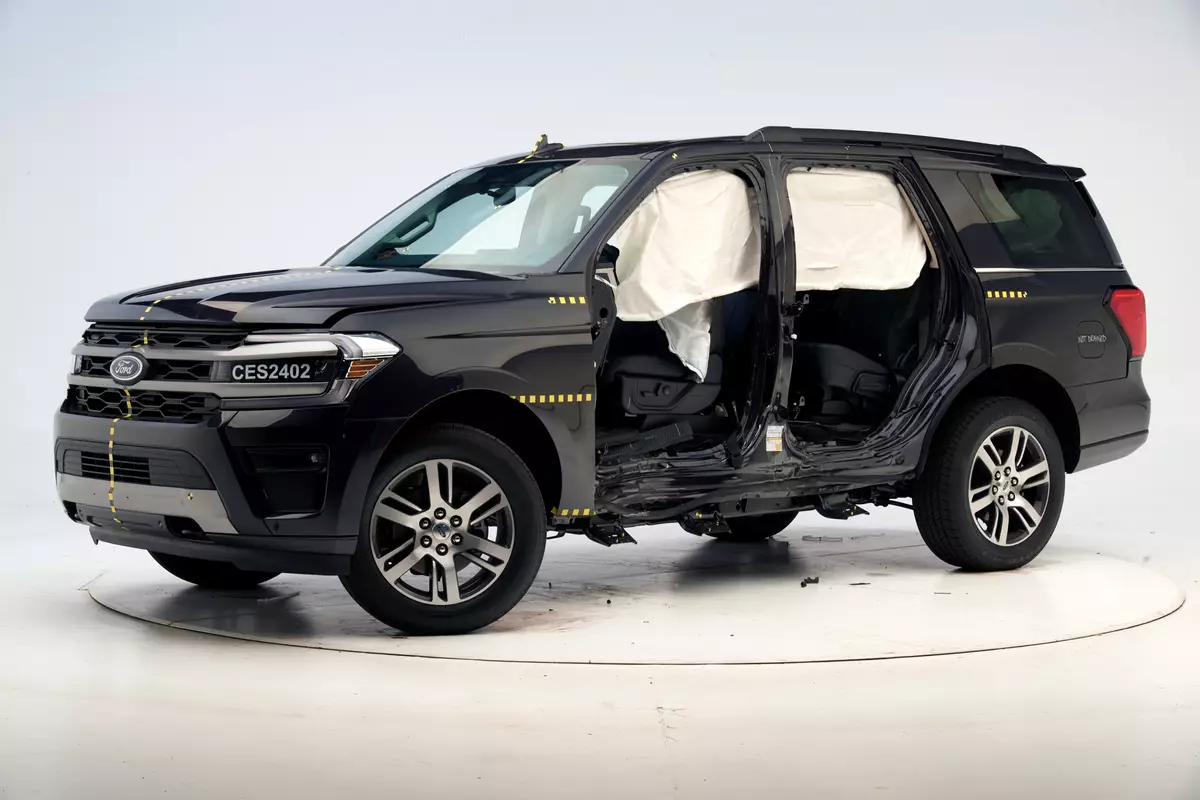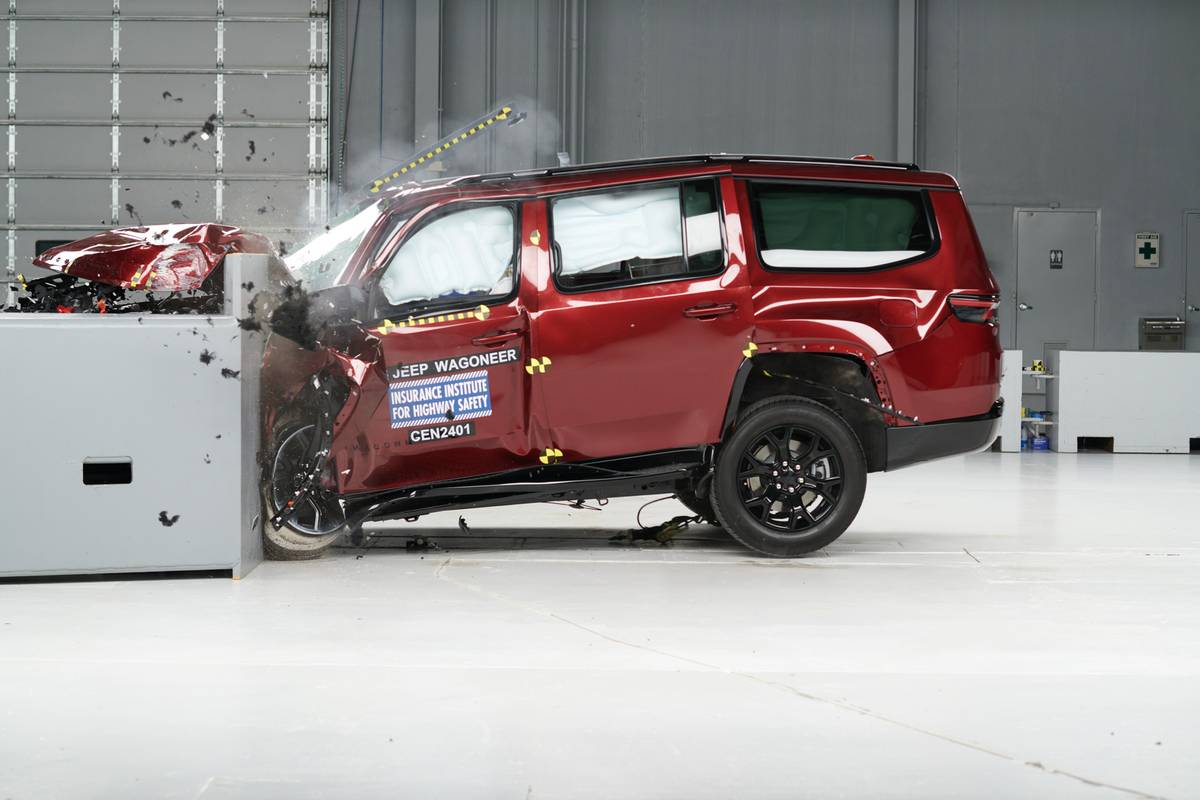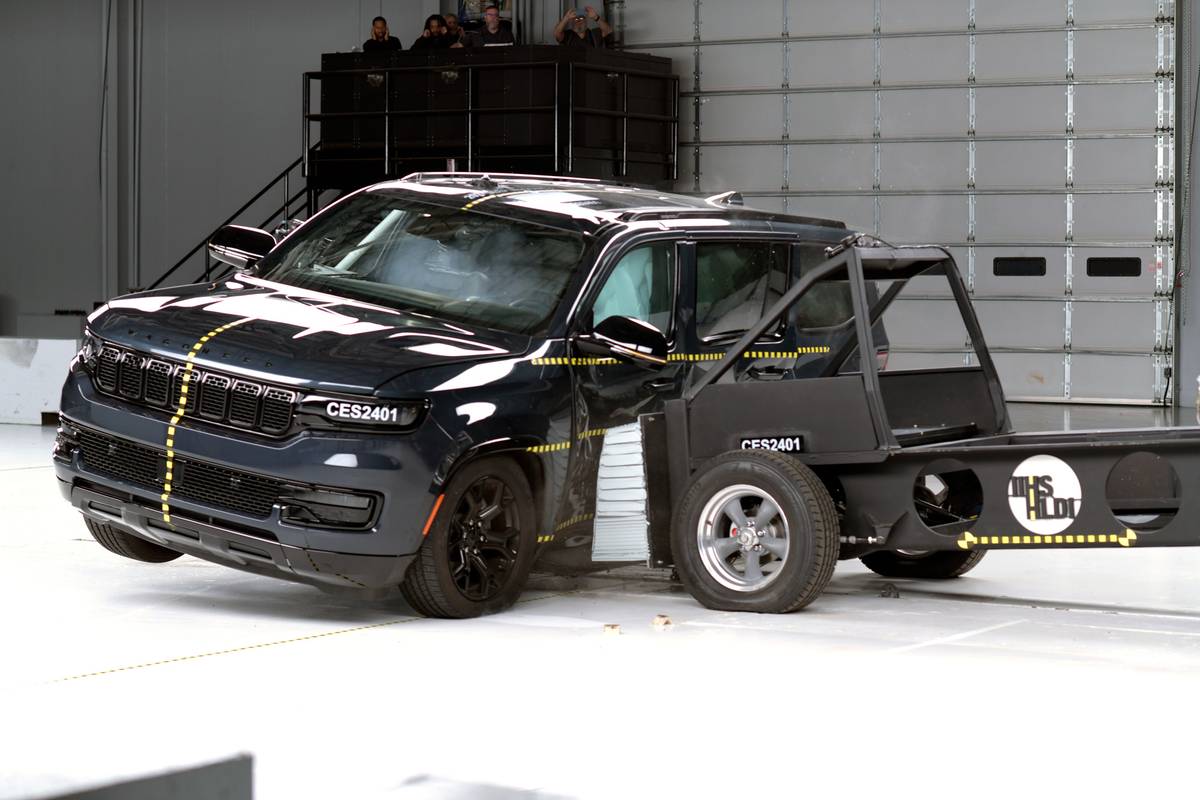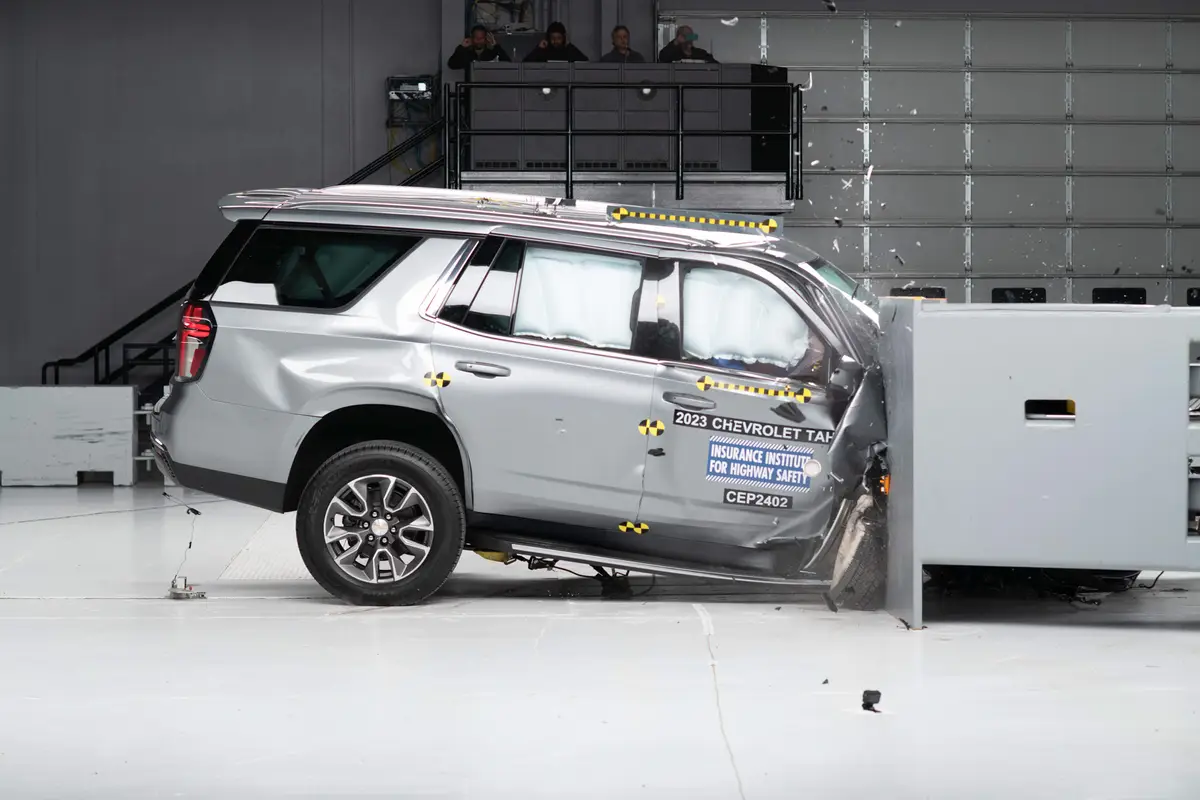Jeep Wagoneer Named Top Safety Pick; Chevrolet Tahoe, Ford Expedition Struggle in Crash Testing

In recent crash tests conducted by the Insurance Institute for Highway Safety, the Jeep Wagoneer earned a Top Safety Pick award, while the Chevrolet Tahoe and Ford Expedition showed that mass cuts both ways in a crash. IIHS president David Harkey notes that the size of vehicles like the three popular SUVs does offer a degree of additional protection in collisions with smaller vehicles but that “The flip side of their large size is that there is a lot more force to manage when they crash into a fixed obstacle like a tree or bridge abutment.”
Related: Study: These 3-Year-Old Cars Are the Most Dependable
More Weight Does Not Equal Safer

For IIHS’s small overlap front crash test, the subject vehicle traveling at 40 mph strikes a rigid barrier that covers 25% of the total width of the vehicle. A dummy the size of an average man is buckled into the driver’s seat for the test on that side of the vehicle, with a second dummy positioned in the passenger seat for the passenger-side test.
Of the three SUVs tested, only the Wagoneer scored the highest rating of good. (IIHS rates vehicle performance on a four-point scale: poor, marginal, acceptable and good.) In both the driver- and passenger-side tests, the front and side airbags deployed properly. The Wagoneer’s safety structure held up well, but slightly less so in the driver-side evaluation, where the crash-test dummy indicated “a modest risk of injury to the driver’s left foot and ankle.”
The Tahoe earned an acceptable rating in the small overlap test, with its airbags and seatbelts performing as intended, but the SUV suffered some structural deformation in the footwells. IIHS’s measurements indicated a substantial risk of lower leg injuries for the driver dummy in that test. On the passenger side, they noted a high risk of injury to the passenger dummy’s right foot and a moderate risk of injury to the left leg.
Alarm Bells for Ford

Of the Ford, IIHS states flatly, “The structure of the marginal-rated Expedition did not hold up in the tests of either side.” In crashes on both sides of the vehicle, the A-pillar separated from the rocker panel, and in the driver-side test, the steering column partially detached from the instrument panel. The agency calls this degree of structural collapse “the sort of result we haven’t seen in years.” Measurements from the driver dummy indicated a high risk of injury to the right leg and a moderate risk of injury to the left; there was a lesser degree of footwell deformation in the passenger-side crash. Putting IIHS president Harkey’s comments about mass and force management into context, the agency says more than 90% of new vehicles subject to this test since 2021 have earned good ratings.
More From Cars.com:
- These 71 Cars Earned IIHS Top Safety Pick Awards Amid Tougher Criteria
- 10 Mid-Size SUVs Ace New IIHS Crash Test, Popular Models Fall Short
- 2024 Ford Expedition: Minor Updates, Starts at $57,520
- 2025 Chevrolet Tahoe and Suburban Up Close: Living Large, Feeling Smaller
- 2024 Jeep Wagoneer, Grand Wagoneer Drop V-8, Priced From $64,945
Better Performance Against Other Vehicles

In the moderate overlap frontal crash test, the vehicle again travels at 40 mph, this time striking a barrier faced with a deformable aluminum honeycomb that covers 40% of the vehicle’s width. This test simulates the forces in an offset head-on collision in which both vehicles are traveling just under 40 mph. All three SUVs earned a good rating in the original version of this test, which only considers front-seat safety.
The updated moderate overlap crash test incorporates readings from a second dummy the size of a child or small woman placed in the seat behind the driver. In all three SUVs, IIHS says the dummy indicated “a fairly high risk of chest injuries because of high seat belt forces.” The Expedition is the only one of the tested SUVs with second-row seatbelt pretensioners, which can reduce seatbelt forces, but its rear-seat dummy fared no better than the Tahoe’s or Wagoneer’s. The Expedition’s side airbags also failed to deploy in both the front and rear seats.
Still, the Expedition and Wagoneer rated marginal in the updated moderate overlap test — falling short of the required acceptable rating in this test kept the Wagoneer from Top Safety Pick+ laurels — while the Tahoe scored a poor rating. In addition to chest injuries, the Tahoe’s rear-seat dummy indicated a high risk of head or neck injuries, and the lap belt wandered up from the dummy’s pelvis onto its abdomen, which increases the risk of abdominal injuries.
IIHS updated its side-impact test in 2021 to better represent the forces imparted by modern vehicles. The striking barrier weighs 4,200 pounds and impacts the test subject at 37 mph. As with the moderate overlap front test, it is faced with deformable aluminum honeycomb to mimic the front of a modern pickup truck or SUV. Not surprisingly, all three large SUVs performed well in this test, earning good ratings, although IIHS notes that the rear-seat dummy’s head “thumped hard against the side curtain airbag in the Expedition.”
Looking Out for Others
IIHS also evaluates headlight and pedestrian-avoidance systems, observing that such features are “especially important for larger vehicles, since their greater height and weight make them more dangerous than smaller cars for pedestrians and other road users.” The headlights on every trim of the Tahoe rated poor, managing to both create excessive glare for oncoming drivers and inadequately illuminate the right side of the road. The Expedition’s headlights performed a similar feat but earned the step-up marginal rating. Depending on trim level, the Wagoneer’s headlights rated either acceptable or good.
The pedestrian detection rating incorporates tests run at different speeds in daylight and at night. The Expedition and Wagoneer earned good ratings, avoiding the dummy in most of the test scenarios. Here, the Tahoe again lagged, rating marginal. It stopped short of the dummy or slowed substantially in most of the daytime tests, but the SUV either did not slow at all before striking the dummy in the nighttime tests or only slowed slightly.
The Final Score

Parents purchasing large SUVs to shuttle families may want to consider the performance of these ones before signing on the dotted line. While all three SUVs rated good in the side-impact crash test and for driver protection in the moderate overlap frontal test, marginal (Expedition and Wagoneer) and poor (Tahoe) results for the rear-seat passenger in the latter test are cause for concern, as is the Expedition’s marginal performance against a fixed object.
Related Video:
Cars.com’s Editorial department is your source for automotive news and reviews. In line with Cars.com’s long-standing ethics policy, editors and reviewers don’t accept gifts or free trips from automakers. The Editorial department is independent of Cars.com’s advertising, sales and sponsored content departments.
Featured stories



